If you were expecting the review of a crossover between Itadaki Street and Super Smash Bros., be prepared for a judgment that beats more than wasabi
Not every review analyzes what points to greatness, and as you may have guessed from the triple pun in the title of this you may also have understood that Itadaki Smash is another example of the great qualitative variety of the Nintendo eShop schedule. The term “indie” is now emblematic of the confusion of the waters to which the independent scene itself has contributed. After all, Shovel Knight has even been able to overcome the equivalent of the triple A in the videogame era from which it draws, while CD Projekt RED with Cyberpunk 2077 drew inspiration from the shovelware titles, if you pass the brutally honest observation.
Yes, “shovelware”: all those titles from the occasion department, with which every palate with a bit of self-love has the opportunity to vanish in favor of a first-party game. The good news, in this sense, is that we struggle to imagine a hypothetical cover of the game covered from top to bottom by labels for an ever lower price. The less beautiful one is that this one beat ‘em up has not caught anything from the evolution of a woody genus by nature. There is no reason to expect the craftsmanship behind Bayonetta and similar (free) reinterpretations of this trend, but adhering to its trappings so faithfully is the best way to get off to a bad start.
Wring of Rage
There is a plot in Itadaki Smash, but it serves as a pretext as much for the action in the game itself as in the review stage to talk about the presentation. What you see in the image below is all you need to know: add the sentence “But the Tengogo who control all the restaurants in the city won’t let it go on like this…” and you get the whole opening narrative. The basic idea is that the Mamoru clan, or the staff of a family-run fusion restaurant, find themselves fighting against enchanted food and the Yakuza of the poor in equal parts, with mutations worthy of the uncanny valley. The protagonists, of course, not the enemies.
What is sobering, when it comes to indie, is that lately there is a tendency to break the fourth wall to denote the passion of the developers towards the great classics that have made them their muse. The results may vary: if the quality of the product matches, the taste is that of a delicious wink; otherwise, the bitter aftertaste is only that of a useless salamelecco. The compliments are wasted, from the awareness of being in a beat ’em up to the admission of guilt, speaking of “uninspired game designers” in one of the dialogues. If we only evaluated honesty, we would be on horseback.
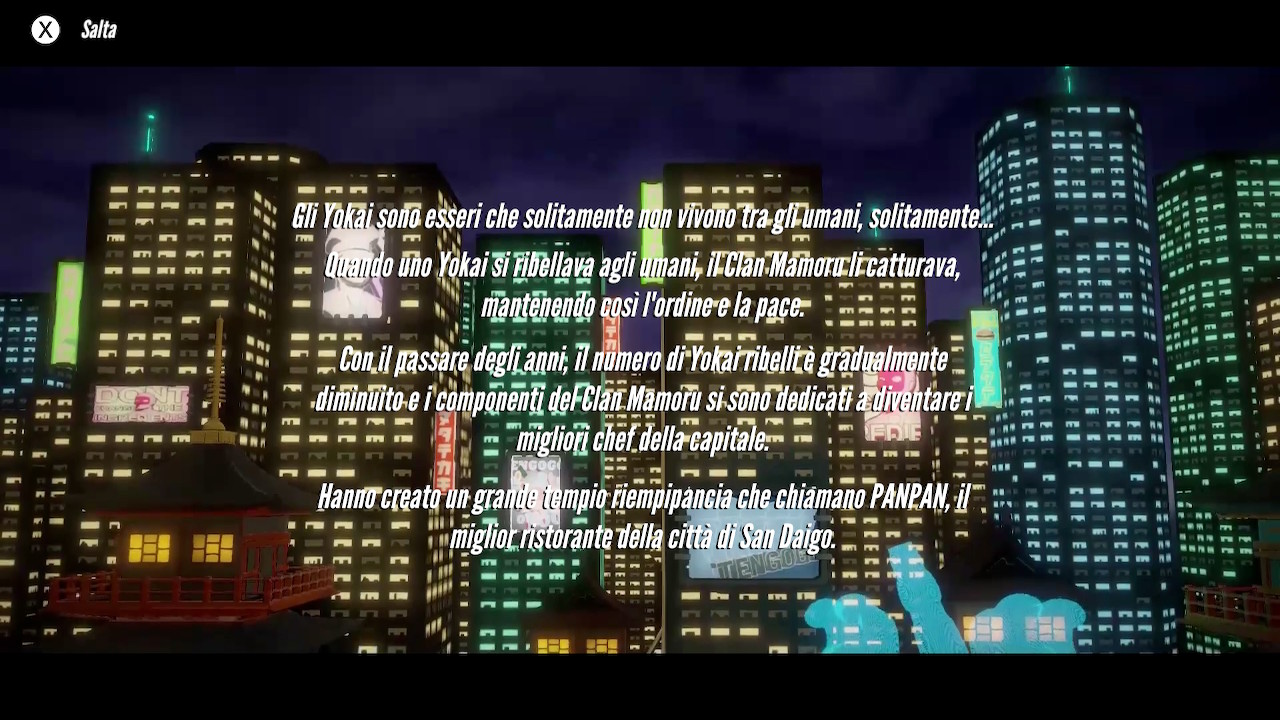
River [censura] Ransom – Review Itadaki Smash
It will be one short review this, because (for the avoidance of doubt) to sift Itadaki Smash it took us barely two days (one too long). If you’ve played a beat ’em up, intended as an exponent of the old-fashioned genre, you will know better or worse what to expect here. Linear levels, completely three-dimensional movements, strong and weak attacks, grappling, running attacks, jumps and the occasional super move. Everything is also usable in co-op locale; the second player is expressly requested only with the Versus mode, completely optional.
Probably the only distinctive (but we doubt it) of the game in terms of gameplay lies in the two types of special moves. On the one hand we have a bar dedicated to Ki, visible below that of health, with which to perform special moves by pressing L. You must fill the indicator with the various drinks available in the levels to be able to use them, otherwise they will begin to draw from the aforementioned health points. The second bar, on the other hand, is unlocked as the bosses are defeated: a somewhat useless mechanic, if you want, given the nature of the two main modes.
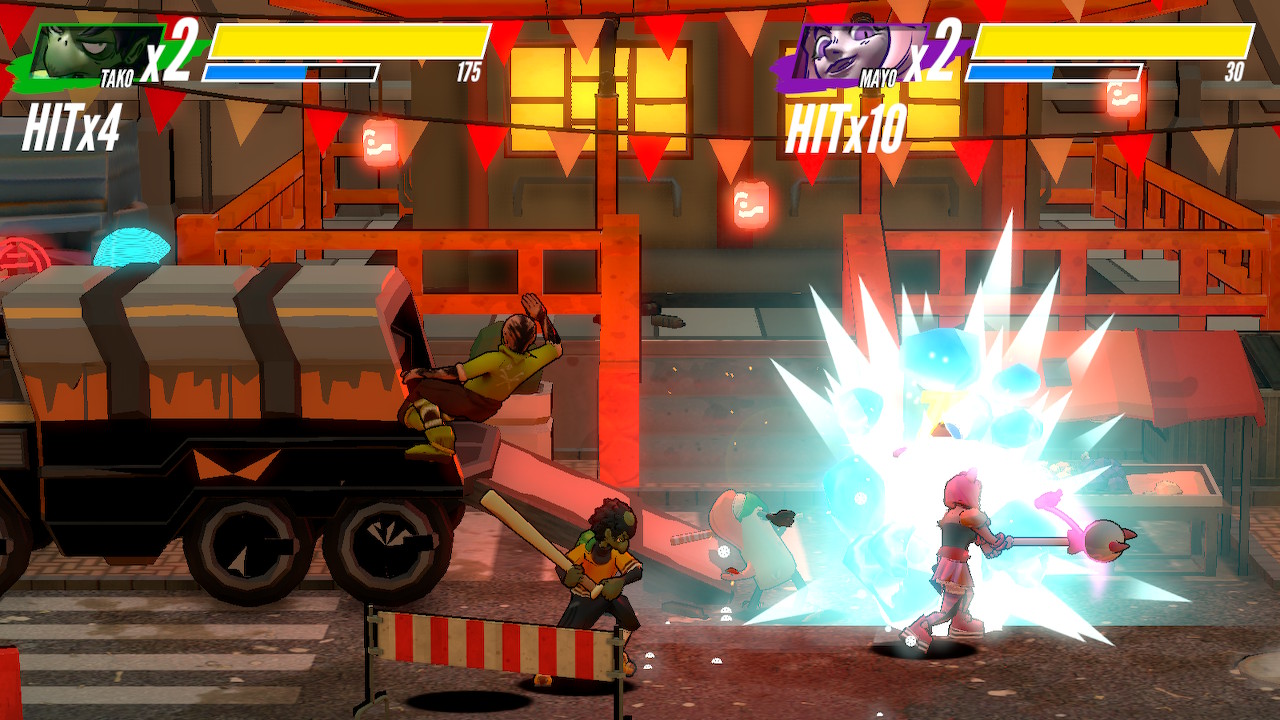
“Go straight, straight, straight, and that’s it” – Itadaki Smash Review
The first of the modes on the menu is spartanly defined “Normal“. The game itself is pretty short, and even if you want to complete it with each character it won’t take you more than a few days. There is no type of level selection: you can only continue indefinitely, and after beating the final boss all you have left are the unlockable levels in the arena mode. The game arises by equating the possibility of continuing to the elements of game design that we would define “quality of life”. However, since the main menu, in case of rescue, does not go beyond the dichotomy “Continue / New game”, the idea falls on the face.
If you want the freedom of experimentation to retry a level with a different character, you’ll have to restart the game itself (not that it’s too much of a waste of time). Alternatively, the “Arcade“Promises to go all the way with videogame archeology: few lives, and no chance to continue. If you are part of the very narrow niche that an option of this type can still be aimed at, good for you. It is not something we would recommend, if we are to be honest, especially considering that to dissect the sample of moves you need to unlock some of them in each game session.
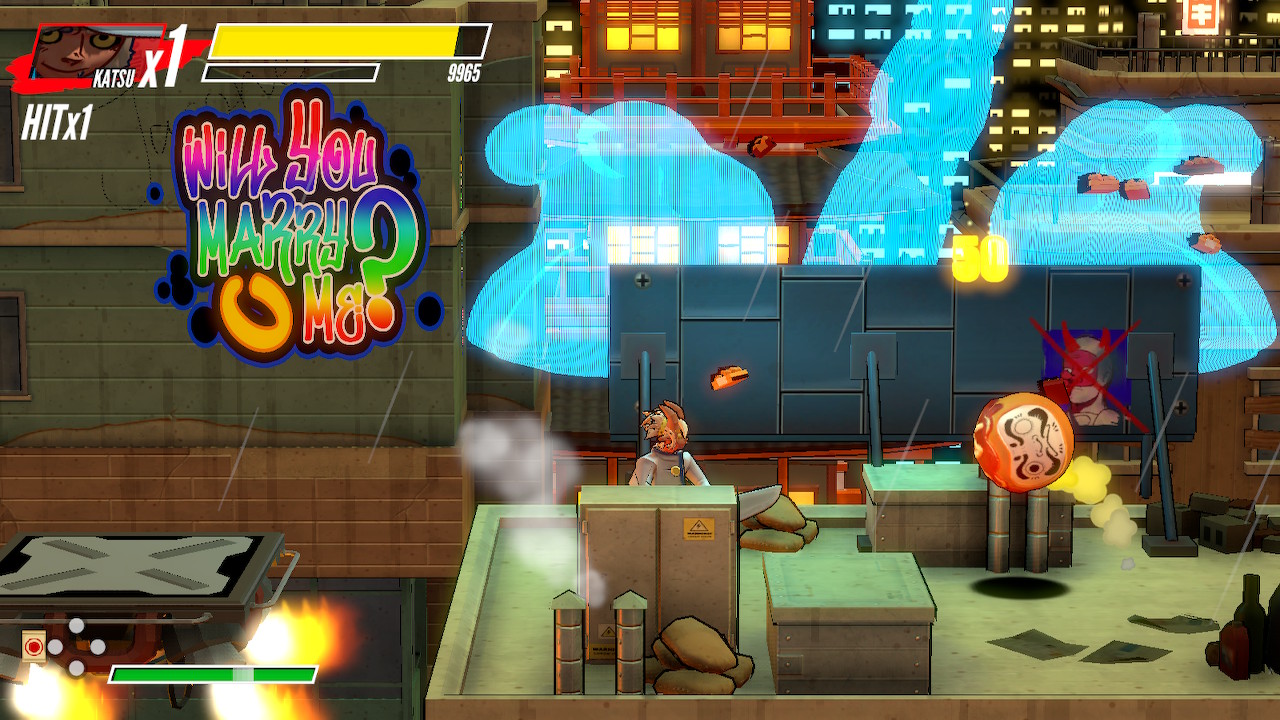
Extra in pallets – Itadaki Smash Review
If you somehow digest a level design prodigal of inconsistencies in the learning curve (from enemies positioned in a sometimes obscene way to laser barriers that can only be deactivated by defeating the enemies on the other side … in a beat ’em up …) just enough to want a dessert, there are two modes for you. “Arena”Allows you to unlock up to six scenarios in which to survive the enemy hordes as long as possible. A nice idea, especially given the implementation of the special bar we alluded to earlier: by filling it with a combo, the player can use it to use moves to clear the screen, power up or heal himself.
The particularity of this mechanic, which two players can both contribute and draw on, shines especially in the Arena mode. Since there is no need to unlock anything, the arsenal of the four protagonists (Tako, Naru, Mayo and, prophesying our opinion of the game, Katsu) is finally exploited full time. The last entry, “Versus”, Allows two players to use what they have learned against each other. There is no selection of scenarios: there is only one alley where you can beat yourself up properly, the two fighters, the health bar, the Ki one … and the special one, demonstrating how some aspects of the design are devoid of reflection.
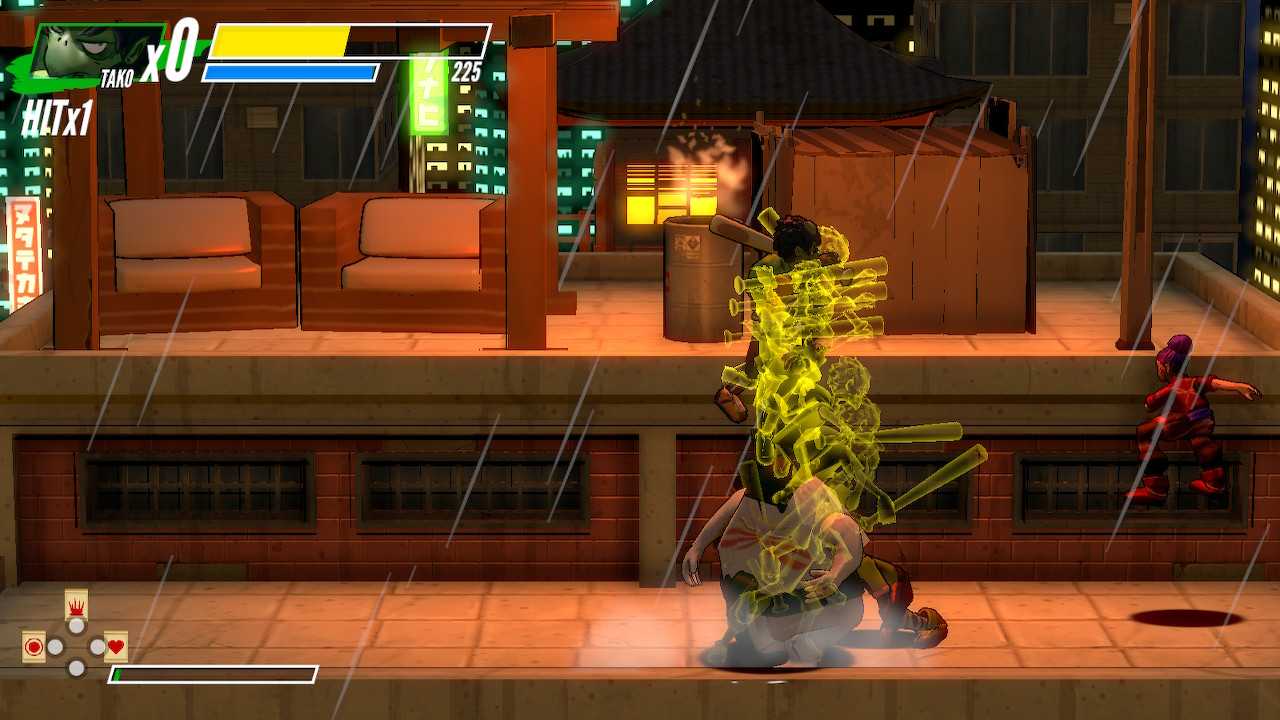
Insecticide Urge – Itadaki Smash Review
“Curtain”. It would have been an effective closure for the section above. However, we regret having to devote another couple of paragraphs to the many smudges present in the game. There is everything bug lovers can love. Aside from the fact that the title generously gave us an example of the visual glitches below (the game interface during a cutscene? Yes, that’s possible), it’s really the least of the problems. To begin with, the flawed positioning of enemies clashes a little with the usual “stop, hit, then carry on” gameplay loop typical of the genre. What happens if the enemies stay out of frame if we have to defeat them to continue?
The answer is called softlock. If you are lucky enough to never run into this kind of problem, softlock is referred to as “the game is not frozen, but it crashes”. In other words, whenever a title expects the player to continue without giving them the means to do so. Reloading the level is possible, since the softlock occurred in the “Normal” mode, but we pity the wretches that can happen in Arcade mode. Furthermore, there is no shortage of crashes (even if, in defense of the game, the unexpected closure was “only” one), nor the annoying visual effects (one flicker notable at the end of a fight in Versus).
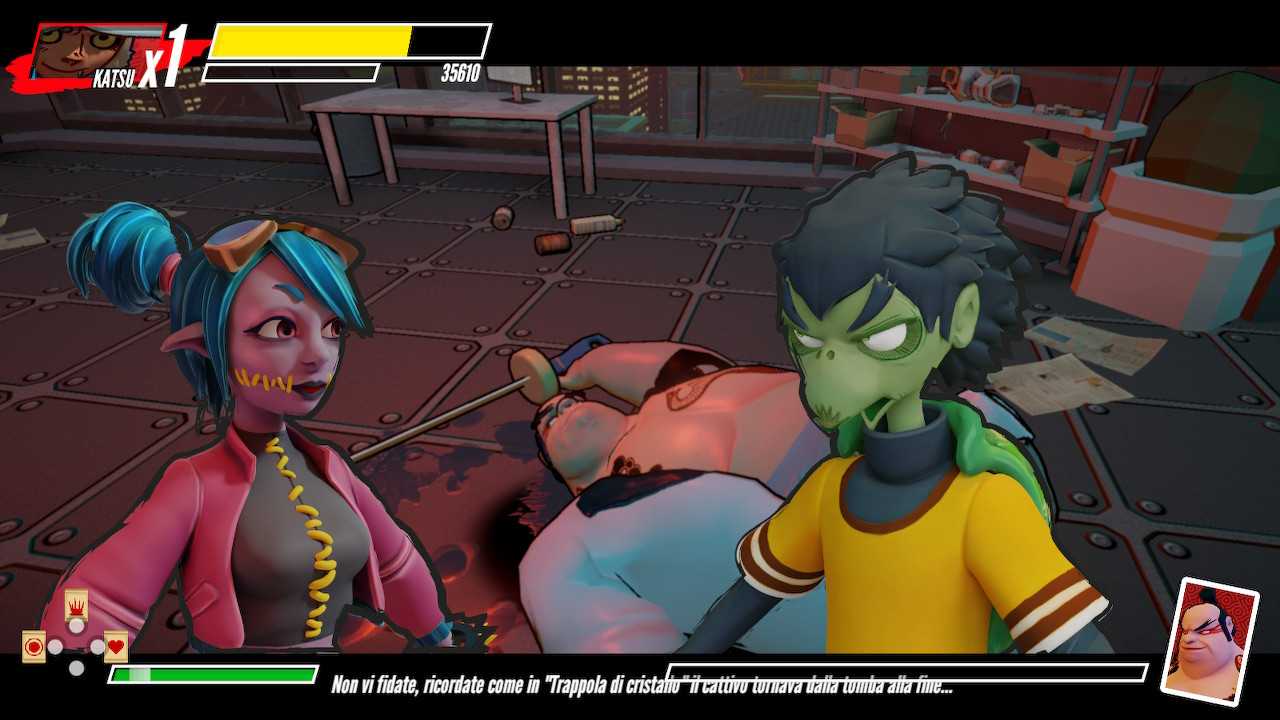
The only blows are those in the report card – Itadaki Smash Review
Let’s talk a little about the technical sector of the game. The graphics engine it is, for better or worse, what you expect from a budget title on eShop with polygonal graphics: more or less without infamy, but definitely without praise. The artistic direction is there: the design of the anthropomorphic oriental menu that acts as an enemy army has its own meaning, as does that of the four protagonists (glassy eyes, with associated nightmares in the game over screen of the Arcade mode, permitting). The rest, however, leaves a lot to be desired. If nothing else, artistically speaking, opting for sprites for the woody movements of the characters would have made more sense.
We would like to speak well of the sonorous, but it is more difficult. We don’t want to talk about anonymity, but the development team (the joint efforts of Main Loop e Relief) was unable to create something that knew existed outside the context of the game. The sound effects are decent, but by and large we doubt whistling the various tunes in this title. We would do it more willingly if there was other content, like a sound test in the options menu, but being able only to change the language, volume and presence of friendly fire (why ?!), we have really run out of topics to talk about.
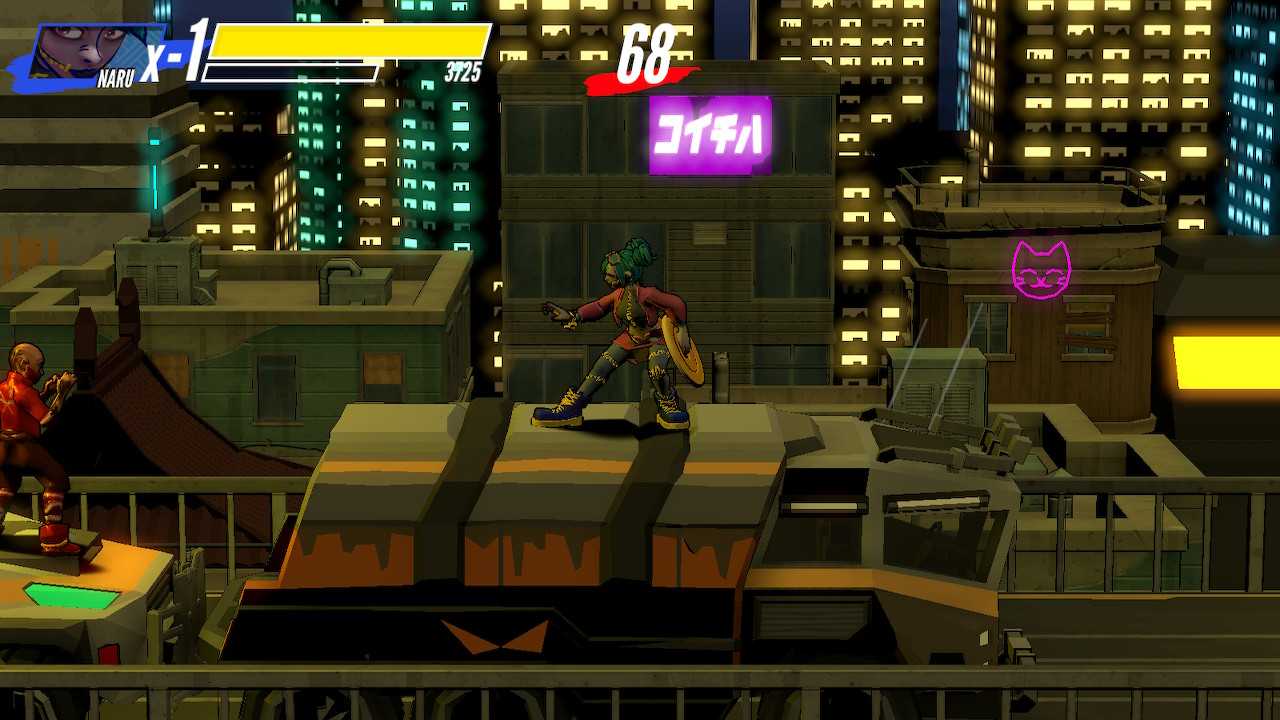
Final considerations
Antòn Ego said it at the end of Ratatouille, speaking of negative reviews: “a fun to read and write”. Believe us, we would have liked to carry on the gags you read in the first paragraph. But after seeing the life indicator drop below zero (above), let’s assume for an oversight in the game’s code, what’s left? Only bitterness, unfortunately. There is no lack of quotation: as the trailer wisely reminds us, one section ends with a car smashed with punches and kicks. The owner isn’t happy about it, but the joke would catch us more off guard if it hadn’t already been seen in Gravity Falls eight years ago (ten, counting the first American TV).
We are sorry to be so hard on this title published by SelectaVision, but the underlying problem (bug aside) is misplaced concentration. If this title had been more dedicated to treasuring the strengths of the genre and less to verbally praise it, our tones would probably be much less harsh. Rather than being a major beat ’em up comeback, Itadaki Smash reminded us exactly why there have been so few around. Of course you can also form your own opinion on this, but for twelve euros we advise you not to do it at full price. Or opt for River City Girls Zero, to be on the safe side.
This was what we thought. But what is your opinion? Tell us below, and as always do not forget to stay on TechGameWorld.com to read other reviews and get all the most important news on the gaming sphere and beyond. For your gamer needs, you can instead find the best discounts in digital format on Instant Gaming.
How not to repeat the beat ’em up
Points in favor
- Interesting attacks …






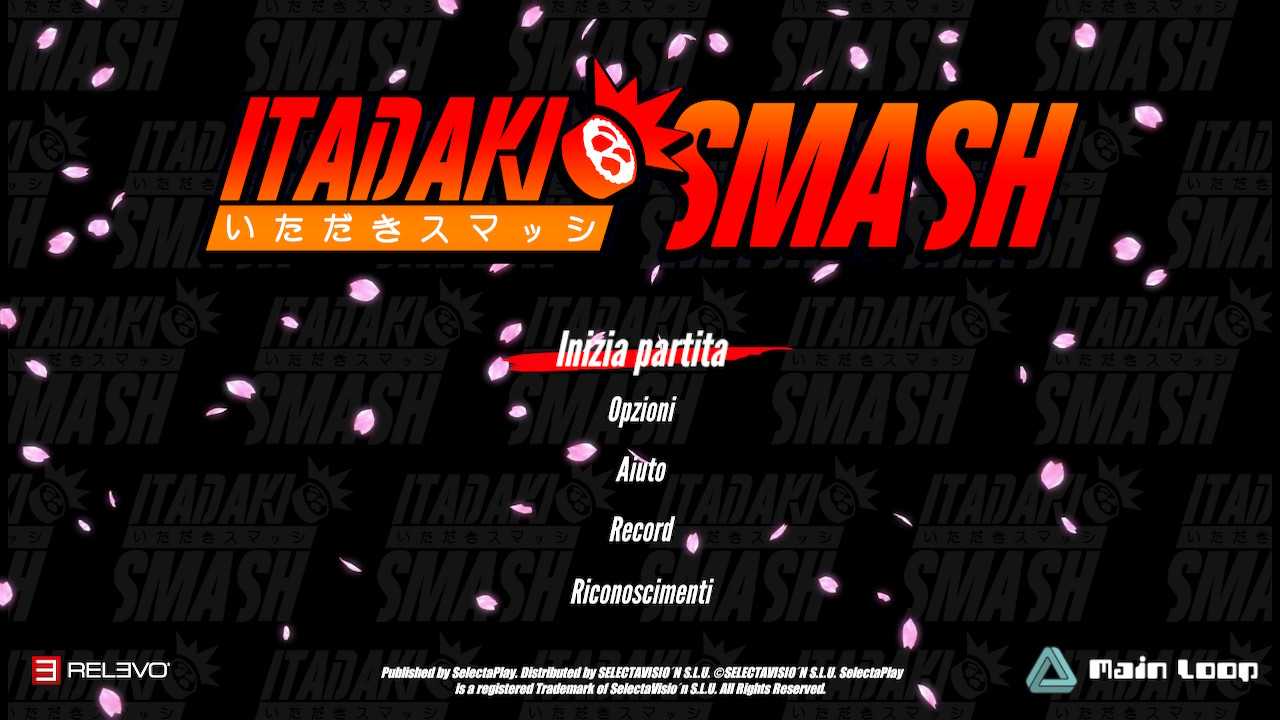





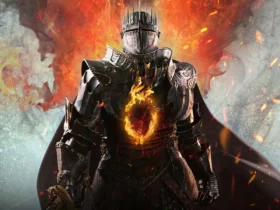
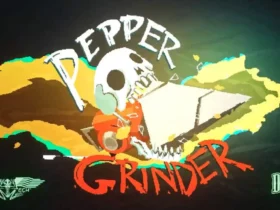
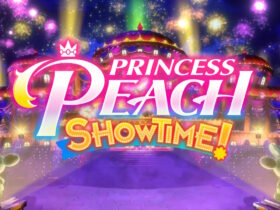
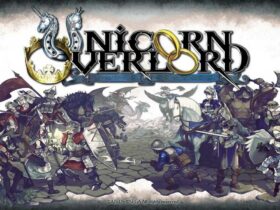
Leave a Reply
View Comments